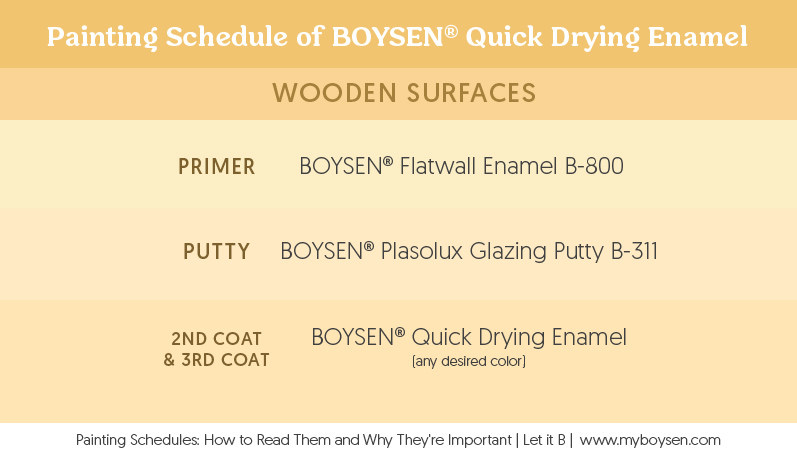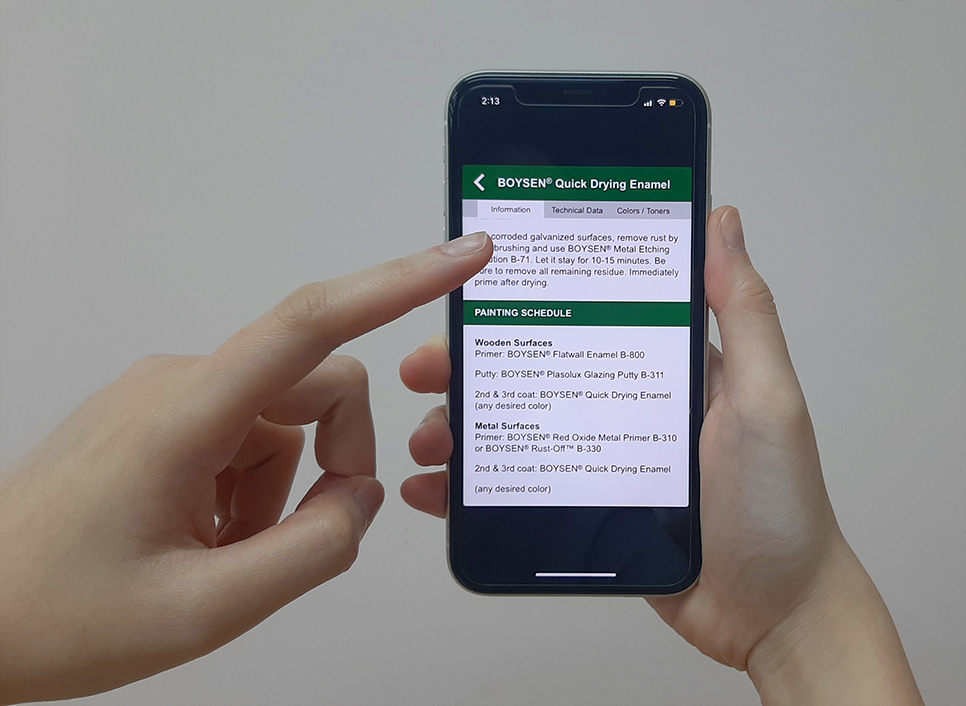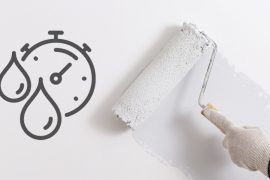Every experienced painter knows that painting is more than choosing a paint in your favorite color. More often than not, home painting is a multi-step process and one which requires more than one product. Without a guide to turn to, it can be difficult, especially for those new to painting, to figure out how to go about a paint job and which products are best suited for the project. This is where a “painting schedule” comes in.
What is a Painting Schedule
Each Boysen paint product will have a manufacturer-recommended painting schedule. The painting schedule is essentially a quick guide for the other necessary products that are compatible with your already chosen product and the sequence in which they’re to be applied—in short, it’s a cheat sheet.
Once you have one chosen paint product, say a topcoat (a.k.a. your preferred paint color), a quick look at a painting schedule will tell you which other products will go with it and in what order they should be used.
How to Read a Painting Schedule
Let’s say your chosen topcoat is Boysen Quick Drying Enamel in Sky Blue. You’re using it to repaint your wooden kitchen cabinets. For this project, you will also need primer, to apply before the topcoat, and putty, to remedy minor dents and holes. You check the painting schedule for Boysen Quick Drying Enamel and this is what you see:

With the painting schedule above, you know that Boysen Flatwall Enamel B-800 is the best primer and Boysen Plasolux Glazing Putty B-311 is the best putty. Finally, for the topcoat, you also know to apply two to three coats of Boysen Quick Drying Enamel. (Note: Recommended accompanying products can differ depending on the type of surface even if you’re using the same paint product. For Quick Drying Enamel, for example, the recommended primer will differ from the one above if you’re painting on metal.)
You’ll be able to find a product’s recommended painting schedule on the packaging label of the paint can. If not, painting schedules for Boysen products are also available on the Boysen website, Boysen.com.ph. Use the search bar to quickly navigate to a product’s info page (where its painting schedule can be found). No internet connection? No problem. Have product info with you wherever and whenever by downloading the Boysen app.

Why a Painting Schedule is Important
Here’s something important to always remember: not all paint products can go together. One main reason is because there are different types of paint—latex, enamel, and epoxy to name a few—and each has properties and formulations specific to its intended use. And, there are instances that when you use different types of paint together, the result is an unwanted adverse reaction.
For example, a common mistake for homeowners when repainting is applying a solvent-based product (like enamel paint) over a water-based one (like latex paint). Instead of a beautifully painted wall, doing so will very likely destroy the two paint layers wasting time, effort, and money. Following the advised painting schedule will help ensure similar mistakes and errors don’t happen to you.
Moreover, some paint product types are more suitable for certain types of surfaces. For example, when working on a roof with no existing paint, the primer to be used may differ whether you’re painting on galvanized iron sheets or unglazed roof tiles. A painting schedule will make it clear which products are suitable and that all products you use for your roof are suited for each other.
Painting schedules are useful. They’re a quick way to check you’re on the right track to a successful project. Make sure to utilize them when you’re next painting! If you have any questions or inquiries about painting and Boysen products, our technical team will be happy to assist you. Send an email to ask@myboysen.com or call (02) 8363-9738 local 413 to 418 during office hours for a one-on-one consultation.




